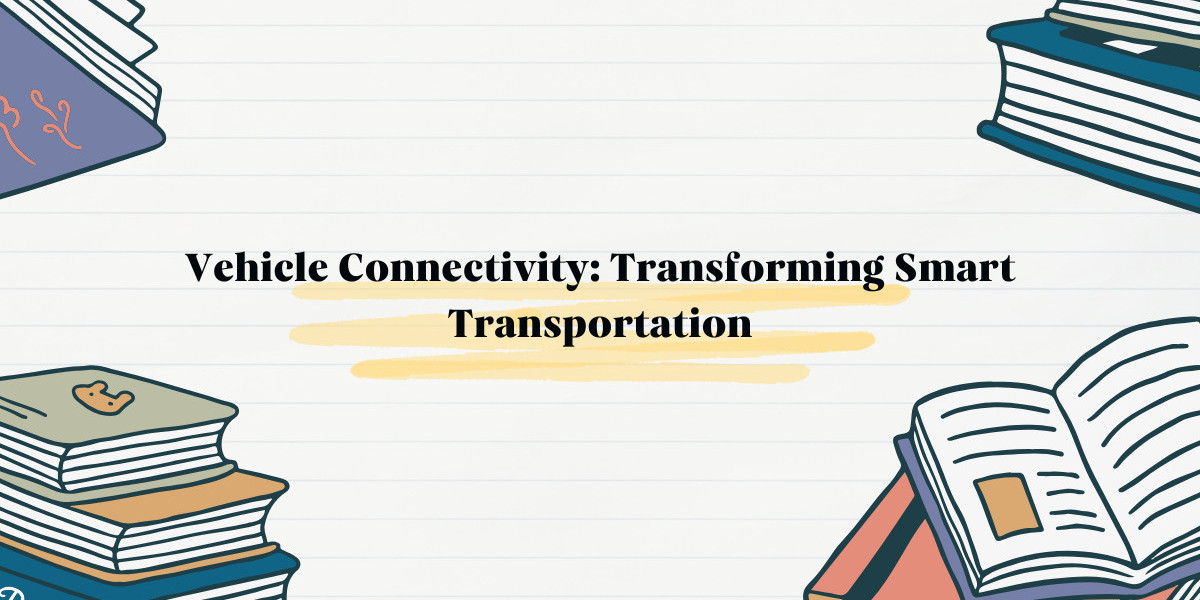Vehicle Connectivity: The Future of Smart Transportation
Introduction
Vehicle connectivity is revolutionizing the way people interact with their cars, roads, and infrastructure. The integration of advanced communication technologies in automobiles has created an ecosystem where vehicles can share real-time information with each other and external networks. This seamless connection is enhancing safety, efficiency, and convenience in modern transportation. As automotive manufacturers and technology companies continue to innovate, connected vehicles are becoming an essential component of smart cities and autonomous driving systems.
The rapid growth of the Internet of Things (IoT) has played a crucial role in vehicle connectivity. By embedding sensors, processors, and wireless communication modules in vehicles, data can be collected, analyzed, and transmitted to improve driving experiences. These advancements are paving the way for new services, from predictive maintenance to real-time traffic management. The ability of vehicles to connect with infrastructure, pedestrians, and cloud-based platforms is creating an intelligent transportation network that enhances mobility and reduces environmental impact.
The Evolution of Vehicle Connectivity
Vehicle connectivity has evolved significantly over the past few decades. Initially, cars were equipped with basic communication features like AM/FM radios and GPS navigation systems. The introduction of cellular connectivity enabled remote diagnostics and emergency response services. As mobile networks advanced, vehicles started to incorporate internet-based applications, transforming them into highly sophisticated communication hubs.
Today, connected vehicles rely on technologies such as 5G, vehicle-to-everything (V2X) communication, and artificial intelligence to provide a seamless and intelligent driving experience. Automakers are integrating cloud-based services to enable over-the-air (OTA) software updates, eliminating the need for physical visits to service centers. The shift towards autonomous vehicles further emphasizes the importance of connectivity, as real-time data exchange is crucial for navigation, decision-making, and overall safety.
Key Components of Vehicle Connectivity
At the core of vehicle connectivity is a network of sensors and communication modules that gather and transmit data. These sensors monitor various aspects of the vehicle’s performance, including engine diagnostics, tire pressure, and braking efficiency. The collected data is processed in real-time and shared with the vehicle’s internal systems, external networks, and other connected devices.
Cloud computing plays a significant role in modern vehicle connectivity by storing and analyzing large volumes of data. Vehicles communicate with cloud-based platforms to access navigation updates, weather forecasts, and infotainment services. The integration of machine learning algorithms enhances predictive analytics, allowing vehicles to anticipate potential issues and suggest solutions. The use of cloud technology also enables fleet management systems to optimize operations and track vehicle performance remotely.
V2X communication is another essential aspect of connected vehicles. It includes vehicle-to-vehicle (V2V) communication, where cars exchange data about their speed, position, and road conditions. Vehicle-to-infrastructure (V2I) communication enables interaction with traffic lights, road signs, and toll systems, improving traffic management and reducing congestion. Vehicle-to-pedestrian (V2P) communication enhances safety by alerting drivers and pedestrians about potential collisions. The implementation of V2X technology is expected to significantly reduce accidents and create more efficient transportation networks.
Benefits of Vehicle Connectivity
The introduction of connected vehicle technologies has brought numerous benefits to drivers, businesses, and urban planners. One of the most significant advantages is enhanced safety. Real-time data exchange allows vehicles to detect potential hazards and alert drivers, reducing the risk of accidents. Advanced driver assistance systems (ADAS) utilize connectivity to provide features like automatic emergency braking, lane departure warnings, and adaptive cruise control.
Improved traffic management is another key benefit of vehicle connectivity. By analyzing data from connected vehicles, traffic control centers can optimize signal timings and reroute traffic to alleviate congestion. This not only reduces travel time but also lowers fuel consumption and emissions. The integration of smart parking solutions allows drivers to find available parking spaces more efficiently, reducing unnecessary driving and improving urban mobility.
The automotive industry is also leveraging connectivity for remote diagnostics and predictive maintenance. Vehicles equipped with telematics systems can detect mechanical issues and notify drivers before they become severe. Service centers can access diagnostic reports remotely, enabling proactive maintenance and reducing repair costs. Fleet operators benefit from real-time monitoring of vehicle health, optimizing maintenance schedules and ensuring operational efficiency.
Entertainment and infotainment systems have been significantly enhanced by connectivity. Modern vehicles offer internet access, streaming services, and voice-activated assistants that provide hands-free control over navigation, music, and communication. Passengers can enjoy personalized content through cloud-based platforms, creating a more enjoyable and convenient travel experience.
Challenges in Vehicle Connectivity
Despite its numerous advantages, vehicle connectivity also presents several challenges that need to be addressed. Cybersecurity is one of the primary concerns, as connected vehicles are vulnerable to hacking and unauthorized access. Malicious attacks on vehicle communication systems can compromise safety and privacy. Automakers and technology companies are investing in robust encryption methods and secure authentication protocols to mitigate cybersecurity risks.
The reliance on high-speed internet connectivity poses another challenge. While urban areas benefit from widespread 4G and 5G coverage, rural and remote regions may experience connectivity issues. Ensuring a stable and consistent network infrastructure is crucial for the effectiveness of connected vehicle technologies. Satellite-based communication systems are being explored as potential solutions to bridge connectivity gaps.
Data privacy is another critical issue in vehicle connectivity. Connected vehicles generate vast amounts of data, including location history, driving behavior, and personal preferences. Protecting this data from unauthorized access and ensuring compliance with privacy regulations is essential. Automakers must implement transparent data policies and provide users with control over their information.
Interoperability between different vehicle manufacturers and technology providers is another challenge in the adoption of connected vehicle systems. Standardized communication protocols are necessary to ensure seamless data exchange across various platforms. Governments and industry stakeholders are working towards establishing global standards for vehicle connectivity to promote compatibility and innovation.
The Future of Vehicle Connectivity
The future of vehicle connectivity is driven by advancements in artificial intelligence, 5G networks, and autonomous driving technologies. AI-powered virtual assistants will enhance in-car experiences by providing personalized recommendations, real-time assistance, and predictive analytics. Voice recognition and natural language processing will enable hands-free interactions, improving convenience and safety.
The deployment of 5G networks is expected to revolutionize vehicle connectivity by offering ultra-low latency and high-speed data transmission. This will enable real-time communication between vehicles, infrastructure, and cloud-based platforms, enhancing navigation and safety features. Edge computing will further improve data processing capabilities, reducing reliance on centralized servers and minimizing delays.
Autonomous vehicles will rely heavily on vehicle connectivity to operate efficiently. High-definition mapping, sensor fusion, and real-time data sharing will enable self-driving cars to navigate complex environments safely. The integration of connected vehicle technology with smart city infrastructure will create a more efficient and sustainable urban transportation ecosystem.
Blockchain technology is also emerging as a potential solution for enhancing security and transparency in vehicle connectivity. Decentralized data management can prevent unauthorized access and ensure data integrity. Smart contracts can automate transactions related to insurance, toll payments, and ride-sharing services, streamlining processes and reducing fraud.
FAQs
What is vehicle connectivity?
Vehicle connectivity refers to the integration of communication technologies in automobiles, enabling them to exchange data with other vehicles, infrastructure, and cloud-based platforms.
How does vehicle connectivity improve safety?
Connected vehicles can detect potential hazards, provide real-time alerts, and assist drivers with advanced safety features such as collision avoidance and adaptive cruise control.
What are the main technologies used in vehicle connectivity?
Key technologies include 5G networks, vehicle-to-everything (V2X) communication, cloud computing, artificial intelligence, and telematics systems.
Are connected vehicles vulnerable to cyberattacks?
Yes, cybersecurity is a major concern for connected vehicles. Automakers implement encryption and secure authentication methods to protect against hacking and unauthorized access.
What is the future of vehicle connectivity?
The future includes AI-powered virtual assistants, real-time 5G communication, autonomous driving integration, and blockchain-based security solutions for enhanced safety and efficiency.




